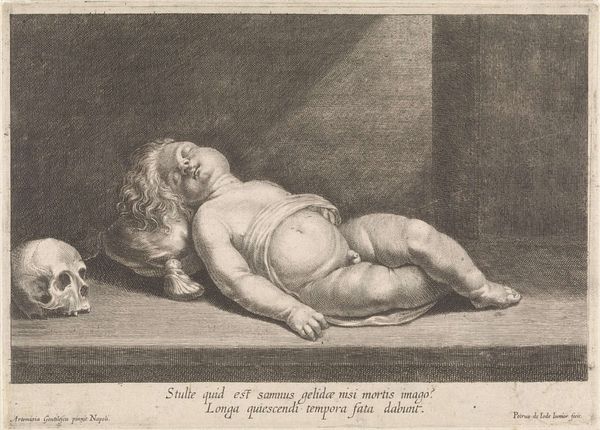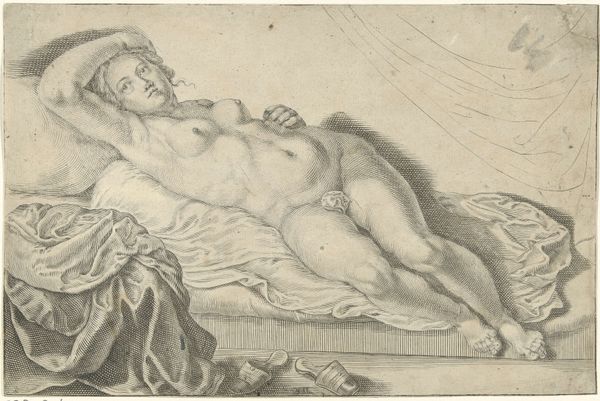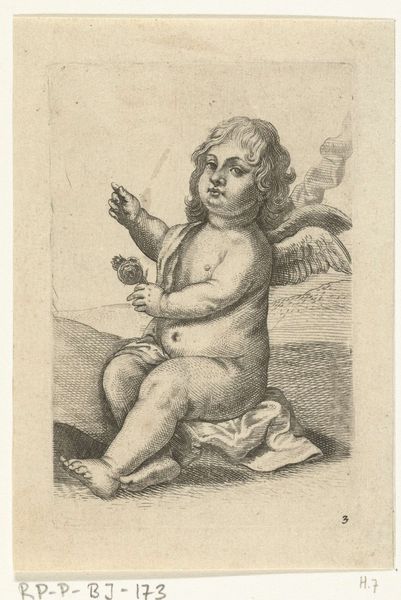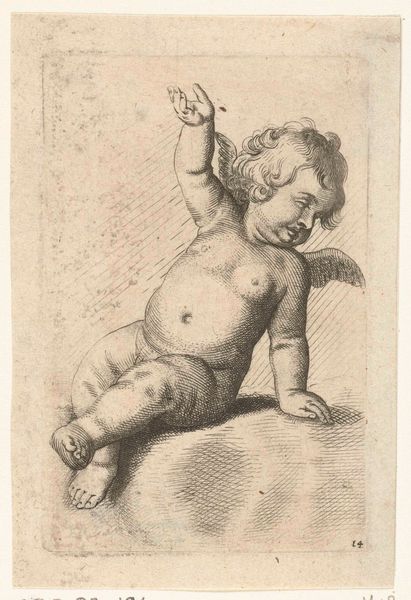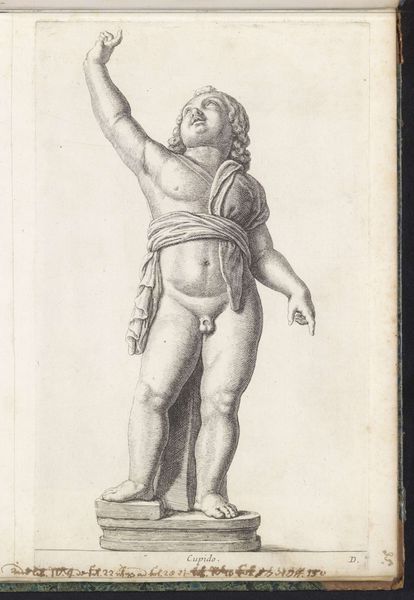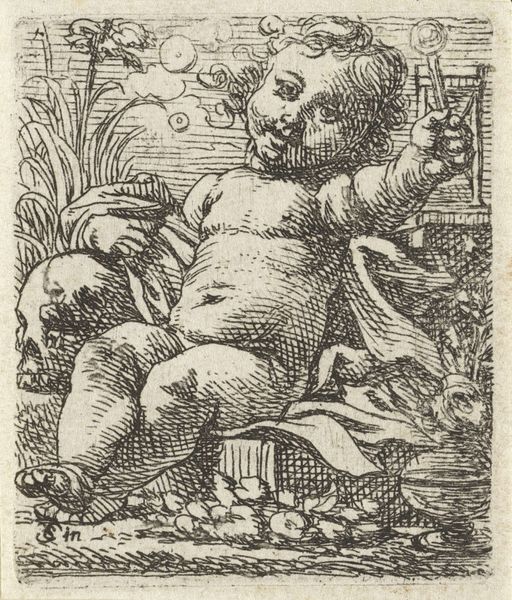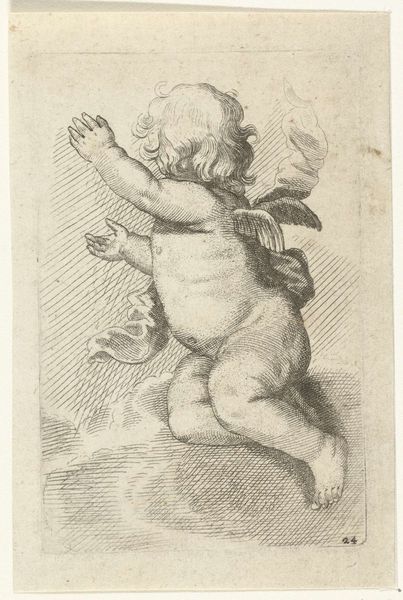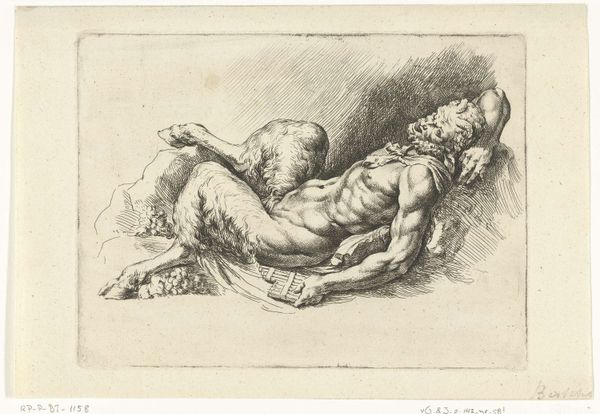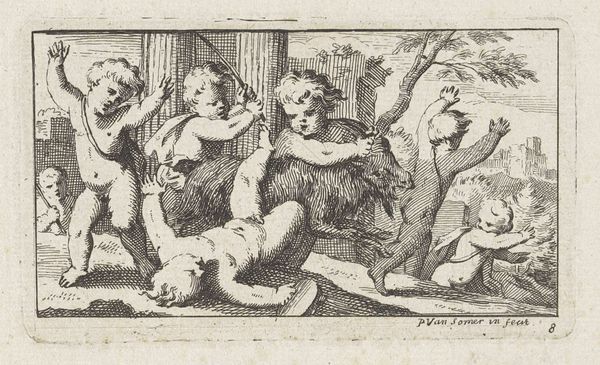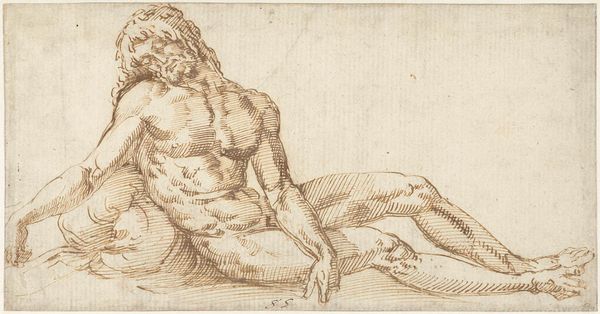
drawing, engraving
#
portrait
#
drawing
#
toned paper
#
light pencil work
#
baroque
#
pencil sketch
#
old engraving style
#
sketch book
#
personal sketchbook
#
pen-ink sketch
#
line
#
sketchbook drawing
#
storyboard and sketchbook work
#
sketchbook art
#
engraving
Dimensions: height 103 mm, width 180 mm
Copyright: Rijks Museum: Open Domain
Curator: Here at the Rijksmuseum, we have "Slapend Christuskind," or "Sleeping Christ Child," an engraving by Bernard Picart, likely created between 1710 and 1733. Editor: It's remarkably serene. The delicate lines of the engraving give the figure a soft, almost ethereal quality, yet the baby appears substantial, resting peacefully on what looks like draped linen. Curator: Picart was known for his engravings that circulated widely, impacting the visual culture of his time. Prints like these played a vital role in disseminating religious imagery to a broader audience. Think of them as the mass media of their era. Editor: Absolutely, and consider the labor involved in producing engravings. Each line is etched with precision, a painstaking process to reproduce an image, and, ultimately, make it accessible. This image transforms faith into something more intimate and reproducible. It brings this Christ child to life by giving a face to a divine myth. Curator: Exactly! And not just disseminate it, but interpret it. Picart, as an engraver, shapes the image he’s reproducing. Here, there's a sweetness, a vulnerability. It fits with the evolving representations of Christ in the 18th century. Editor: Yes, but the halo above the baby’s head disrupts that feeling slightly. I think there are some conflicting signifiers here. The soft engraving speaks to comfort and ease, while the halo reminds viewers of what’s to come in this baby’s life. Curator: The tension is part of what makes it powerful. Picart’s piece provides a visual for contemplation that served to encourage certain interpretations of faith, not just passively reflecting beliefs. It played a vital role in shaping it. Editor: It definitely challenges assumptions about what images mean, where they come from, and how labor affects art history. I will be thinking about that for a long time! Curator: As will I. Seeing the artwork and then researching its social impacts reminds me how much meaning resides in the exchange and reception of these artworks.
Comments
No comments
Be the first to comment and join the conversation on the ultimate creative platform.

